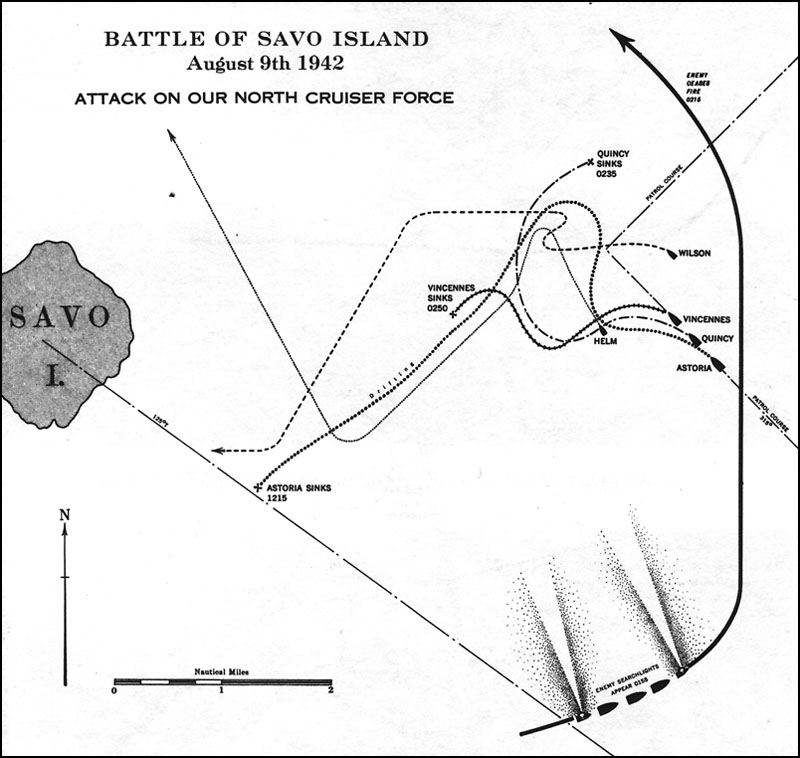I was seventeen years old when I first learned something of the history of the Navy's fiasco at Savo Island. I was a Midshipman Fourth Class, United States Naval Reserve, taking my first course in Naval Science. It was called Naval Orientation and History.
The textbook showed neat diagrams of the action of August 9, 1942, like the chart below:

The lessons I took away from reading about Savo Island nearly six decades ago had to do with equipment and training. US Ships (some of them, at least) were equipped with radar, but they were defeated by Japanese ships with no radar - only superb optical systems and sailors well trained in night engagements.
Of course it wouldn't occur to a seventeen year old that the problem wasn't poor watch standing by radar operators or lookouts, but problems at the highest levels of leadership in the navy.
President Roosevelt was furious and losing patience ten weeks after Pearl Harbor, when the navy had no triumphs to proclaim. He ordered Secretary of the Navy Frank Knox to give him the names of the forty "most competent" Admirals in the navy at the time. Knox appointed a board to do the job. Last year the US Naval Institutes' Naval History magazine published the recently-discovered list of the forty names the board provided.
Even more surprising than the obscure names who appeared on the list was the omission of two admirals most responsible for success in the Pacific: Chester Nimitz and Raymond Spruance. Neither was a member of the most influential and powerful cabal in the navy. That cabal is often referred to by the shorthand designator: "battleship admirals." That's a misnomer, though battleships figured largely in their careers. They were admirals whose seagoing tours (mostly in battleships but also in cruisers and destroyers) alternated with tours in the Bureau of Ordinance (BUORD). They were often referred to in the rest of the navy as "the gun club."
Neither Nimitz nor Spruance belonged to the gun club. Neither was Halsey, for that matter. Nor were Admiral Leahy, chair of the Joint Chiefs of Staff during World War II and Roosevelt's closest military advisor, or Admiral King, Commander in Chief of the US Fleet. But from the Chief of Naval Operations (Admiral Stark) on down, the navy in 1942 remained dominated by the gun club.
None of the "gun club" admirals was promoted to five-star fleet admiral rank.
More later.




No comments:
Post a Comment